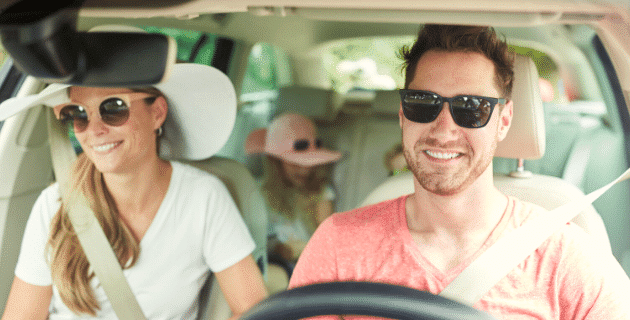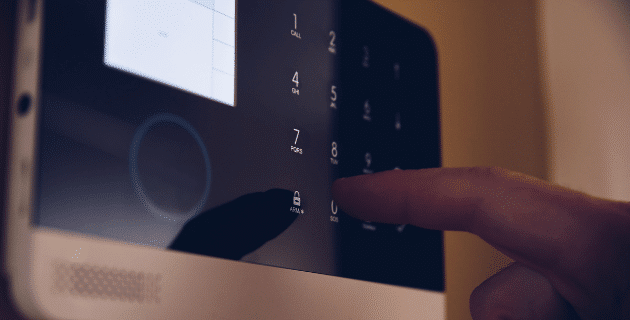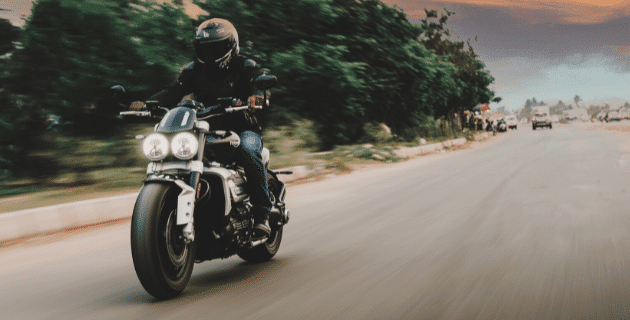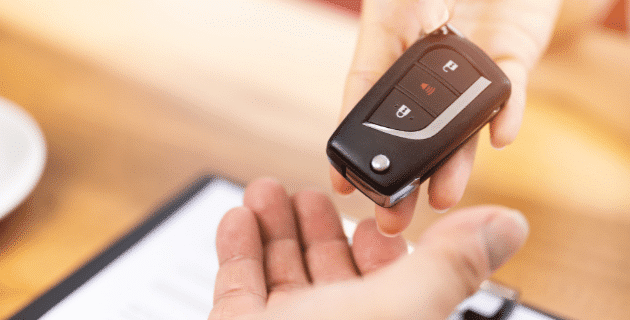
by California Casualty | Auto Insurance Info, Homeowners Insurance Info, Safety |
Summertime was made for fun-from beach vacations to family barbecues, road trips, and dips in the pool. But unfortunately, sometimes during all that fun, there’s a mishap or two….
Make sure that your home and property are fully protected in case anything happens. Use this guide as a reference on how to insure yourself and your family for summer fun.
Swimming Pools
Your swimming pool is probably covered under your homeowner’s policy. That being said, you’ll want to make sure that you have enough to cover the following situations.
If someone is hurt or drowns in your pool, you are responsible. It doesn’t matter whether or not you gave them permission to swim. Your personal liability coverage is designed to cover these instances. Typical homeowner’s policies carry $100,000 of liability protection. If you have a swimming pool, you need considerably more. Experts suggest either increasing your personal liability (with the maximum being $500,000 or $1,000,000 depending upon the state) or adding a personal umbrella policy. Umbrella policies start at $1,000,000 in coverage. In addition, take steps to prevent these tragedies by securing your pool with a fence and self-latching gates. Make sure children never swim unattended. Install alarms that alert you if someone is entering the water.
Pro Tip: Make sure your pool meets the local municipal code. We’ve seen some insurance companies refuse to pay if the pool is not up to code.
- Tree falls into your pool
Summer storms can be intense, and could cause your tree to fall on your house or into your in-ground pool. If a tree falls into your pool, your homeowner’s insurance could cover a reasonable expense to remove it if it was felled by a covered peril and if it struck a covered structure (like your pool) and damaged it. No more than $500 will be paid for any one tree and no more than $1,000 total for any one claim.
Trampolines and Swing Sets
Trampolines and swing sets are considered attractive nuisances, places on your property that can attract children but also put them in danger. (Swimming pools are, too.) You will need to safeguard them, such as by making sure they are in a fenced area.
Trampoline injuries or deaths are covered under your personal liability insurance as part of your homeowner’s policy. Check with your insurance agent to see if you have enough coverage for a trampoline accident. Also, check to see whether there are any individual limits to that coverage. Protect against these accidents by installing an enclosure to secure the trampoline so there are no unsupervised guests. Always supervise children while they are using the trampoline and enforce the rule that only one person uses it at a time.
Swing set accidents also are covered by personal liability. Make sure your homeowner’s policy has adequate coverage. Supervise children whenever they are using the swing set. Inspect your set regularly and cover sharp corners or protruding nails that could cause injury. Check that there is a minimum of 22 inches between swings and that the slide is no longer than 10 feet. Also, make sure there’s at least 10 feet of clearance around the swing set.
Dog Bites
Dogs spend time outside with us in the summer. Sometimes that can lead to circumstances where dogs can bite. If your dog bites a third party, you are responsible. Liability coverage protects you in this instance. It pays for the bite victim’s medical expenses and covers your legal fees if they sue you.
-
- Make sure that your dog’s breed is not restricted by your insurance policy. Some policies will not cover breeds such as Pit Bulls, Doberman Pinschers, or Rottweilers. California Casualty does not currently have such restrictions.
-
- If your dog is a victim of a bite, pet insurance can help cover that emergency vet visit. You also may be able to be reimbursed by the other dog owner’s liability coverage.
BBQ Grill Fires
Backyard barbecues are a favorite summertime activity. We may not think about them being dangerous, but they can be. Practice summertime fire safety. Keep your grill away from the house and any other structures. Store your charcoal or propane safely and away from the heat. Keep a fire extinguisher handy. Always supervise young children when around a grill.
-
- If a grill fire spreads to your home or property, and causes costly damage, your homeowner’s policy will likely cover repairs, minus the deductible.
-
- If a guest is injured by a fire on your property, and you are legally responsible for that bodily injury, your liability insurance will cover that person’s medical expenses. If you are not liable, but your guest was injured through his/her own fault, then Coverage F – Medical Payment to Others may cover your guest’s medical bills.
Boats and Personal Water Craft
Small boats like kayaks and canoes may be covered under your homeowner’s policy as personal property. If you have a boat, you will need a separate boat insurance policy. You also need one for personal watercraft such as jet skis.
- Boats – The costs of insurance will vary depending on the value of your boat and where you keep it. For a California Casualty property contract, the policy will cover up to $1,500 for boats and a trailer for 16 named perils but not for theft away from the residence.
- If you’re transporting your boat on a car trailer, your auto insurance will likely cover any accidents.
o If you are at fault for a car accident, your auto liability will extend coverage but there will be no physical damage coverage for the boat or trailer.
- If you want physical damage coverage for the trailer, it needs to be added to the auto policy. If you want physical damage coverage for the boat, it needs to be included on the boat policy.
- If your boat is parked at your house and is damaged, your homeowner’s insurance may cover it. Otherwise, your boat policy will cover accidents on the water.
- Personal Watercraft – Your jet ski or other personal watercraft will need its own policy to protect you from vandalism, accidents, and liability for injuries to people riding your personal watercraft. This type of policy is available through the Agency Services division of California Casualty.
Rental Car Accidents
If you’re heading on vacation this summer, you might be driving a rental car. Your own auto insurance may cover a rental car, minus your deductible, or the credit card that you used to book the car may come with insurance. If not, you will want to make sure that you are covered by purchasing rental insurance through the rental car company. Here’s what you will need to think about.
- Collision Damage or Loss Damage Waiver – Optional in many states, this type of coverage pays for the rental car if it is damaged or stolen. There usually is a deductible, for which you’re responsible. If your auto policy covers collision damage, make sure that it also covers “loss of use.” For a rental company, getting a car repaired in the shop means it loses the income it could be getting from renting the car. The rental company can charge you the daily rental rate for each day the vehicle is out of service.
- Personal Accident Insurance – This optional policy covers you, the driver, in the event of an accident, including ambulance transportation and medical bills.
- Supplemental/Additional Liability Insurance – This optional policy covers the other driver and passengers whom you may injure in an accident. It also covers any property damage. You likely have liability on your own auto policy. Check to make sure the liability limit is enough. You can purchase supplemental liability insurance with the rental car company or get an umbrella policy from your current insurer.
- Personal Effects Coverage – This optional policy covers your possessions if they are damaged, lost, or stolen, something your homeowner or renter’s policy may already cover.
Have a great, fun-filled summer!
This article is furnished by California Casualty, providing auto and home insurance to educators, law enforcement officers, firefighters, and nurses. Get a quote at 1.866.704.8614 or www.calcas.com.

by California Casualty | Auto Insurance Info |
If you’ve ever been in a car for hours on end, you know the challenges of long-distance driving. It can be uncomfortable, boring, and if you’re tired, even dangerous. Here’s how to stay safe and comfortable during your next long distance road trip.
Plan your route.
Even if you’re using a GPS, you will want to take a look at a map to know where you are going. That allows you to plan your trip, including where to stop to ensure that you’re not driving too long without a break.
-
- Try to take a 15-minute break for every 2 hours of driving.
- Plan your rest stops, not only for mealtimes, but also consider interesting places to visit to break up the trip.
- Account for peak travel times. You may make less progress during rush hours, so consider getting off the road during that time.
Prepare your vehicle.
There’s nothing worse than breaking down on the road for something that could have been prevented with regular maintenance. Before your trip, take a good look at your car, and have it serviced at your local mechanic to make sure it’s in good condition for the trip.
-
- Check fluid levels (brake, coolant, engine oil), tire pressure, and tread depth.
- Make sure that your windshield wipers are in good condition and your lights are working.
- Pack an emergency kit for your car, just in case. This should include safety flares, a flashlight and extra batteries, and a first aid kit.
- Clean and vacuum your car. Sitting in a clutter-free car makes the trip so much nicer.
- Childproof your car before the trip. Make sure it’s safe for your youngest passengers.
Make sure you’re well-rested.
Driving when you’re tired can lead to poor decisions and reduced reaction time which can cause accidents. A study by the AAA Foundation for Traffic Safety estimates that 328,000 crashes each year are caused by drowsy driving. Researchers believe there may be even more than reported. Don’t put yourself or your family at risk.
-
- Get enough sleep the night before your trip, and if possible, the night before that as well.
- Don’t drive when you’re already tired. Avoid planning long drives after work.
- If you feel tired, pull off the road. You can even take a short nap in your car in a safe place, such as a rest stop.
- You can also try short-term pick-me-ups, such as caffeine. Chewing gum can work to keep you awake. Or try an energizing scent. The scent of peppermint can help make you temporarily more alert.
Stay hydrated.
You may be reluctant to drink a lot on your trip, for fear of having to stop more often to go to the bathroom. However, it’s important to stay hydrated. Dehydration can make you feel more tired and cause blurry vision.
-
- Avoid sugary drinks which can cause dehydration.
- Avoid coffee or tea, except as the occasional pick-me-up. They also can dehydrate you.
- Drink water. Pack a cooler and keep it nice and cold so it will feel refreshing.
- You can add citrus or berries to your water for some healthy flavor.
Prepare and plan food and snacks.
Mealtime and snacks are some of the fun of long-distance road trips. Whether you check out a new restaurant or munch on some home-brought favorites, food can be a highlight. Plan for your meals and snacks ahead of time so that you’re not searching for food when you’re hungry, and so that you make the most of your travel time.
-
- Pack sandwiches, put them in a cooler, and then stop for a picnic lunch at a rest stop or park.
- If you have family along the route, stop for a visit around mealtime. You’ll enjoy some homemade food and family time as a bonus.
- Research restaurants along your route. You might find some local fare that you otherwise wouldn’t have a chance to try.
- Choose healthy snacks that keep you full and that aren’t overly messy for the car. These include mixed nuts, trail mix, jerky, granola bars, crackers, carrots, celery, and fresh fruit.
- Bring wipes and designate a trash bag. If you need the floor space for luggage or legs, try a trash container that hangs on the back of the seat.
Stock your car with entertainment.
Long car rides can be boring, and not only for children. Planning things to do can help make the time pass more quickly. If you’re not the one driving, you may even be able to use the downtime productively.
-
- Make a playlist of your favorite songs. Take requests from your (future) passengers and you’ll have everyone engaged.
- Listen to an audiobook or podcast. You can borrow one from your local library or use a favorite streaming service.
- Keep the children occupied with books, puzzles, Mad Libs, Rubberneckers or car games that you can play without any materials, such as I Spy or “find the license plate.”
- Complete a mini-project if you’re not driving, such as organizing your Smartphone screen, deleting photos and emails, brainstorming goals, or practicing a new language.
Finally, make sure you have the proper car insurance. Coverage will give you peace of mind should anything happen on your long distance road trip.
Safe travels.
This article is furnished by California Casualty, providing auto and home insurance to educators, law enforcement officers, firefighters, and nurses. Get a quote at 1.866.704.8614 or www.calcas.com.

by California Casualty | Homeowners Insurance Info |
Is there anything better than knowing your vacation is near? You’ve taken off work and you’re busy planning and packing. But while you’re focused on your destination, don’t forget that you’ll also be leaving your home unattended.
Whether you’re heading out of town for two days or two weeks, take the time to prepare your house and property so there will be no unfortunate surprises (or visitors) while you’re away.
Make your home looks lived-in.
Savvy thieves look for signs that you are away, such as an overgrown lawn, a pile-up of mail or packages, or an empty driveway. A well-maintained home and property reinforce the fact that people are living here, and most likely at home.
-
- Mow and edge your lawn before you leave. Trim your bushes, especially around windows and close to your house.
- Pick up any debris and any personal items in your front or backyard.
- Stop your mail and newspapers, and arrange for a neighbor to pick up any packages.
- Leave a car parked in your driveway or ask a neighbor to park in front of your house.
- Invest in an inexpensive light timer to turn the lights on and off while you’re away.
Secure your home and property.
There’s a lot more than simply locking the doors that goes into securing your home and property. You want to make it unlikely that a thief would target your home, and also protect its contents should a neighborhood fire or disaster occur.
-
- A security system can help protect your property and also reduce the cost of your home insurance policy.
- Consider a motion-sensor floodlight, which can help to deter trespassers.
- Make sure your important papers are in a fireproof container or safe.
- Leave an emergency contact number and a spare key with a trusted neighbor. (Don’t hide your key in a rock. That’s the first place a thief will look.)
- Don’t advertise that you are going away on social media. Wait until you return home to post photos.
Clean thoroughly.
Coming home to a dirty house is no fun. Neither is being greeted by week-old smells of stinky garbage. Take the time to clean up before you leave so everything is fresh and ready for your return.
-
- Give your house an overall cleaning.
- Empty the refrigerator of perishable items.
- Empty all of the trashcans, especially the kitchen trash, right before you leave. Ask your neighbor to put out your trash cans on the next trash day.
- Run your garbage disposal with half a cup of vinegar and some water.
- Do the laundry and change the sheets.
Make plans for your pets and your plants.
It goes without saying that you won’t leave your pets or plants unattended if you’re going to be away.
-
- Depending on the type of pet, you may need a pet sitter or boarding facility. Make those plans well in advance of your trip.
- If you’re leaving pets at home, make arrangements for someone to check on them. You will provide them with food and water of course. But even low-maintenance animals can get accidentally trapped in spaces or encounter other mischief.
- Ask a neighbor to water your plants at your home or theirs. If you dole out your plants to multiple neighbors, make a list of plants and locations so you know who has what.
Put your systems in vacation mode.
If no one will be living in your house, why pay for gas, electric or water? It’s a good time to save energy by shutting down the home systems that you don’t need, taking into account if there are any pets or plants that will need them.
-
- Put your water heater in vacation mode. It’s a setting that allows your water heater to run your boiler at a lower temperature than normal.
- Turn off the water valves to the dishwasher, washing machine and all sinks, if no one is going to be using them (such as a neighbor watering plants).
- Set your thermostat to a temperature closer to the outside temperature. Just remember to adjust it for pets and plants as needed.
- Change the batteries in your smoke detectors if you have not recently done so.
Do a final check the day you leave.
There’s a lot to think about as you’re leaving for vacation, and likely your mind is more focused on the trip ahead than what’s happening at home. This is where a final “to do” list and check-in helps. Plan to do these things on the day you leave.
-
- Unplug and shut off appliances not in use. Not only does this save on your electric bills, it protects items from power surges.
- Close all doors and windows. Close the curtains and blinds.
- Leave on a light or two on or set a lamp timer.
- Set the thermostat appropriately.
- Check the washer. The last thing you want is old (and smelly) wet laundry to greet you when you return.
- Make sure your oven is off. Make sure your iron is off.
- Pro tip: Take pictures of items you’re worried about, such as oven knobs to show they’re off. That way, you can check back if you’re concerned about them.
Check-in while you’re away.
You may be out of town, but you’ve got great ways to check in to see what’s happening in the neighborhood.
-
- Subscribe to a local app such as NextDoor.
- Look at online footage from your home’s security camera.
- Text or call a neighbor to check in.
You also may consider hiring a house sitter so that you don’t have to worry about what’s happening at home. If you do choose that route, make sure that the person is a reputable one. Establish a set of rules, so it is clear what your house sitter can and cannot do (for example: can watch Netflix; can’t have parties).
Don’t forget to thank the neighbors who helped you. Bring them a souvenir or small gift from your vacation or get them a gift card for a dinner out.
Finally, know that your home and property are protected by homeowner’s insurance. Should anything happen while you’re gone, your policy helps provide that peace of mind.
Have a great trip.
This article is furnished by California Casualty, providing auto and home insurance to educators, law enforcement officers, firefighters, and nurses. Get a quote at 1.866.704.8614 or www.calcas.com.

by California Casualty | Auto Insurance Info |
When you take your motorcycle out on a beautiful day, you can enjoy it all — the open road, the sunshine, the fresh air, and the calmness of the ride. But when you take your bike out on a windy day, it’s a much different experience.
Not only can the wind be cold and uncomfortable for riding, but it can also make it more challenging to maintain control. In fact, riding your motorcycle in the wind can be such a nerve-wracking journey that it might make you decide to skip the trip entirely. However, there will be times when you get caught on a windy day or when your bike is your only option. Follow these tips to stay safe when riding your motorcycle in the wind.
Tip #1: Prepare in advance for a windy ride.
-
- Minimize the amount of baggage that you carry. Saddlebags, backpacks, and even your clothing can catch the wind, creating unnecessary drag.
- Secure loose items that could be easily blown away.
- Wear protective eyewear to shield your eyes from any windblown dirt or debris.
Tip #2: Check the weather.
-
- Wind speeds exceeding 50 mph are considered too dangerous for motorcycles, even heavier models.
- Wind speeds between 20 and 30 mph will be too much for most lightweight motorcycles.
- Avoid taking your motorcycle out during high wind warnings, hurricane-force winds, tornados, or other severe weather conditions.
Tip #3: Stay calm and in control.
-
- Don’t panic. Relax and try not to grip the handles too hard. Maintain a steady speed.
- Ride in the middle of the lane. Give yourself some space in case you move to the right or left due to wind gusts. Know that the other vehicles on the road could be moved by the wind, too.
- Know your abilities. If you’re inexperienced, or if you feel out of control, find a safe place to wait it out. Better safe than sorry.
Tip #4: Know the direction of the wind and how to adjust.
-
- You may be able to feel the direction of the wind. But if you’re unsure, look for things that are blowing: grass, the tops of trees, and flags. Note the direction the wind is blowing.
- If it’s a tailwind, it will push you from behind.
- Give yourself extra stopping distance. The wind could propel you forward as you’re trying to slow and stop.
- Watch your speed and stay in your comfort zone. You don’t want the wind to push you faster than you are comfortable traveling.
- If it’s a crosswind, it comes from the sides.
- This is the most difficult type of wind. It can come to you from either side, or both.
- Shift your weight to the side the crosswind is coming from and lean into it slightly. Do it carefully so you don’t affect your balance.
- Using your leg on the side the wind is coming from, turn your knee in the direction the wind is blowing. Your leg acts as a sail and the wind won’t push you as hard.
- If it’s a headwind, it’s coming to you from the front.
- Headwinds are stronger than the wind that usually comes at you from the front.
- Ride low behind the windshield.
- Keep your legs and arms close to your body and to the bike.
Tip #5: Be aware of wind fluctuations.
-
- The wind direction can change at any time. Be prepared to adjust accordingly.
- If you’re behind a large truck, it will block the wind from you somewhat. Be prepared for a wind gust as you move away from the truck.
- Remember the rules about sharing the road with others. Add extra distance when it’s windy in case you need it.
Tip #6: Certain places are windier than others.
-
- Winds are generally higher in the hills and lower in the valleys.
- Roads with hedges and other barriers can help to protect you from the wind.
- If the open road is too windy, see if there is another route you can take that is more sheltered.
Windy conditions can contribute to accidents. Make sure your bike is fully protected with the right amount of motorcycle insurance. Safe travels—and enjoy the ride.
This article is furnished by California Casualty, providing auto and home insurance to educators, law enforcement officers, firefighters, and nurses. Get a quote at 1.866.704.8614 or www.calcas.com.

by California Casualty | Auto Insurance Info, Calcas Connection |
Anyone who has ever dropped off at soccer practice, then zoomed to dance, and back again to school, knows the reality of parenting today. We live in our cars. In fact, we can’t live without them, which is why it’s more than just an inconvenience when our cars are in the shop.
Enter the rental car, the savior helping us to navigate our hectic lives, pun intended. Rentals can be a necessity when our car is in the shop for repairs after an accident, and it would be nice if we didn’t have to pay too much for them. That’s where rental car reimbursement coverage (also called transportation expense coverage) can help. A basic amount of this coverage is included with collision/comprehensive coverage in your auto policy. It helps cover the cost of a rental car after a car accident, but the basic coverage may not be enough these days. Optional higher coverage levels are available and can help to cover more of the cost of a rental car.
Things are changing—which could impact your budget.
Today’s world is not the same as pre-pandemic. The changes that have happened in the last year or longer are impacting the repair and rental car industries. This could cause you to pay significantly more out-of-pocket even with rental car reimbursement. Read on to find out why, and what you can do about it.
Parts are taking longer to get.
We’ve been spoiled with free, fast shipping, getting items in a couple of days from the time we order them. That’s no longer the case. Just as you probably had to wait for the hottest toy for the holidays (or that elusive Sony PlayStation 5), repair shops have had to wait…and wait…and wait…for parts. There’s a global supply chain shortage. Parts that used to arrive in a day or two are now taking weeks or longer. Ships carrying supplies are being held at docks. There’s also a global semiconductor shortage, which especially affects the advanced electronics in our cars.
Shops are doing partial repairs or keeping your car indefinitely.
With parts delayed for weeks or longer, some shops are making partial repairs on drivable vehicles, sending them home, and finishing the job later. They are keeping undrivable cars for weeks or even months while waiting for parts.
When there’s no one to work on your car, it sits for longer.
The labor shortage has hit the automotive industry. There are fewer truck drivers transporting parts, fewer dock workers unloading them, and fewer mechanics working. The pandemic prompted many people to reevaluate their career choices, and leave their jobs. If you’re lucky, your body shop is fully staffed. If not, you’re likely in for a longer repair.
Your car could be in the shop longer than your rental coverage.
Normally, you’d expect to have a rental car for a couple of weeks. It might surprise you to learn that the average repair time at the end of last year was 17 days, according to Enterprise Rent-A-Car. That means that many people had their cars in the shop even longer than that. The length of rentals has continued to increase in 2022. If shops are waiting on parts and workers, chances are that your rental car coverage will run out before repairs are done. Not only that but the rental bill can be even more than the repair bill, and you’re hit with any expense that insurance doesn’t cover.
Longer collision repair times are just part of higher costs. Rising inflation rates and greater demand for vehicles have increased rental car prices. AAA is seeing car rental prices trending higher in 2022 than in the previous four years.
It makes sense (and cents) to bump up your coverage.
The typical auto policy includes a basic amount of coverage that reimburses up to $20 a day with a $600 cap per accident. That means your $20 per day coverage lasts for 30 days. Luckily, you’re not limited to those numbers. Consider expanding your coverage to $30/$900, $40/$1,200 or $50/$1,500. Selecting a higher amount will help you cover today’s higher cost of rental cars, especially for longer repair times.
This article is furnished by California Casualty, providing auto and home insurance to educators, law enforcement officers, firefighters, and nurses. Get a quote at 1.866.704.8614 or www.calcas.com.





